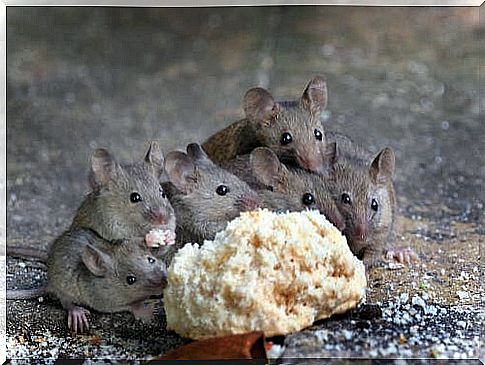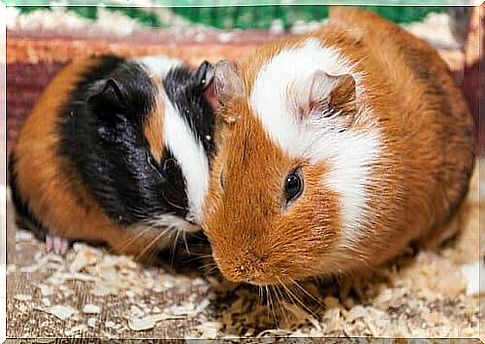The Most Common Parasites In Rodents

Rodents are often one of the most serious health problems in densely populated urban areas. Poor management of solid waste in general, as well as poor cleaning and personal hygiene measures, are generally two of the factors that enhance the appearance of mice and rats.
Both species, rats and mice, are good examples of these mammals, which include approximately 2,280 other species. Of course, not all of these species pose a pest risk to humans.
But the difficulties we may have with some of these animals are not limited to cities alone. Rural areas are not unthreatened by this pest. This is why, throughout history, almost independently of coordinates, rodents have been considered one of the most lethal pests.
Rodents: unfairly stigmatized?
The classification of all rodents as a calamity is not entirely accurate. Its negative action, as well as its ‘ability’ to transport parasites, viruses and bacteria, was greatly favored by the disorderly expansion of human civilizations.
In addition, among the members of this category are examples such as the guinea pig, a species that has been used – some even guarantee that it was abused – for a long time as an object of study in highly varied experiments in nature.

Likewise, many of these animals have had long lives as pets, while others, while remaining mostly wild animals, enjoy great sympathy and popularity, like squirrels.
Rodents: carriers of parasites, viruses, bacteria, diseases…
Many people have the mistaken idea that only rats and mice carry diseases that are highly harmful to human health. However, other species such as marmots, wild rats, prairie dogs and even ‘friendly’ squirrels can transmit pathologies of moderate or very high severity.
First, almost all species in this family serve as an abode and food source for various ectoparasites or external parasites. The most common are fleas, ticks, lice and mites. We can also include mosquitoes and flies.
Furthermore, several researches have shown that rats can carry up to 13 zoonotic parasites. In other words, these parasites can be transmitted and negatively affect people.
This risk of infection does not only occur with specimens that are in the city and feed on garbage. It also includes those who live in agricultural environments and maintain healthier diets.
But that is not all. Rodents also become hosts for another 10 non-zoonotic parasites. Specimens that have up to 9 different species of these organisms have also been found, in ‘versions’ dangerous to humans. Hence the high risk of sharing spaces with them.

Contagion channels
The ways in which a rodent can transmit parasites and diseases to people are varied. Sometimes it is enough for the skin to come into direct contact with the excrement of these animals. This includes not only urine and feces, but saliva as well. The risk of transmission is equally high through inhalation.
Victims of bite and scratch attacks are almost always treated in health centers as possible new recipients of some pathology. Therefore, the measures taken when this occurs are extremely aggressive.
Rodents can also contaminate food in a very simple way, which makes them unwelcome visitors in kitchens, especially in bars and restaurants, as well as in any place where prepared and unprepared food, including packaged products, is sold.
Another very dangerous risk to human health is that rodents have the undesirable ability to poison water or any liquid with which they come into contact.
most common diseases
The list of pathologies whose transmission to humans falls directly on rodents is led by salmonella. Its symptoms, which occur between 12 and 72 hours after infection, include diarrhea, vomiting, fever and abdominal pain.
But, without a doubt, the most sadly famous disease related to these animals – exclusively to rats – is the plague. Responsible for thousands of deaths throughout history – more than the sum of all wars – and for the dramatic decline in population at certain times.







